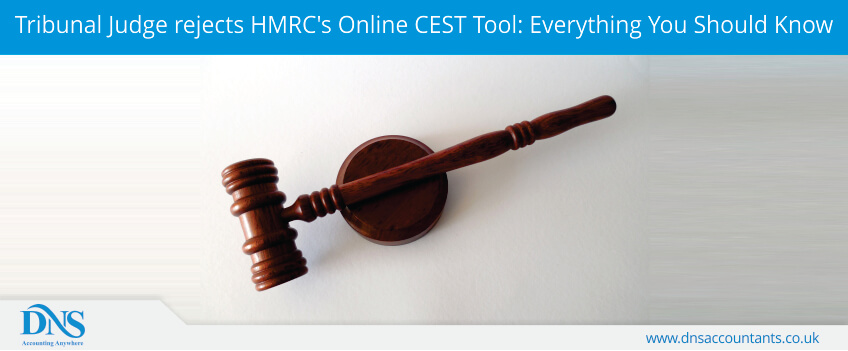A tribunal judge has rejected HMRC’s CEST results, where the employment of a Met Office contractor was wrongly classified falling under IR35. Here is everything you should know about this verdict.
Recently, an employment tribunal judge has rejected HMRC’s Check Employment Status for Tax Tool (CEST), where the contractor has successfully proved that he was wrongly caught by the IR35 rules and reclaimed thousands which was in overpaid taxes. The judge has clarified that the contracting professional was self-employed, which further contradicted the results given by the controversial assessment tool.

What is the case?
This case revolves around Tony Elbourn, a business analyst who was associated with recruitment and consulting firm Qualserve Consulting Ltd. to work with a public sector body named Met Office between August 2017 and January 2018 on a contract basis. However, Tony was later treated as an employee for tax purposes, and several taxes were deducted from his wages. According to the off-payroll working rules, he had to bear unlawful taxes and national insurance deduction from his pay.
The unlawful deduction made Tony Elbourn to appeal to the employment tribunal for a fair treatment reclaiming the deductions which according to rules were wrong. It is generally seen that many end-client companies deduct employers’ as well as employee’s National Insurance Contribution from the contractor’s rates, which is an unlawful practice as per the off-payroll rules is laid for public sector contracts.
HMRC’s CEST results proven wrong
Tony first appealed to the client, where it was decided that he was a ‘deemed employee’ (falling inside IR35 Rules) after using the HMRC’s Check Employment Status for Tax Tool. While putting up its defence the Met Office later claimed at tribunal that Tony was in fact a self-employed professional. This further gave Tony a legal proof to his employment status that he isn’t a worker or an employee but a self-employed professional who doesn’t fall inside IR35. This ensured that HMRC’s CEST assessment results are proven wrong in the case of Tony Elbourn.
What is HMRC’s ‘Check Employment Status for Tax’ tool (CEST)?
HMRC’s ‘Check Employment Status for Tax’ tool (CEST) is nothing but an online assessment tool which helps you determine your employment status for tax purposes, i.e. determine whether your employment falls in IR35 status or not. This assessment tool is based on a series of questions, the answers of which determine the final results. However, this tool has been criticized by experts at various instances.
The Final Verdict by Tribunal Judge
Judge O’Rourke found that the tax and deductions are unlawful as Tony Elbourn is a self-employed, which meant that his engagement doesn’t fall under IR35 rules. Also, the presiding tribunal judge rejected the results of HMRC’s CEST tool. “Elbourn was given a project and, apart from a weekly meeting to check on progress, he was his own master,” concluded the judge while giving the verdict in favor of Elbourn.
Commenting on the verdict, Dave Chaplin, CEO of ContractorCalculator stated, “This case marks a hammer blow for HMRC. CEST’s accuracy has once again been called into question, in a case where the contractor’s self-employed status was never in doubt.”
“Moreover, the case has presented thousands more contractors, who have been overtaxed due to Off-Payroll, with a straightforward means of recouping what is rightfully theirs,” he added.
What’s Next?
According to Tony Elbourn, an estimated £9,500 was unlawfully deducted from his wages in the form of taxes and towards national insurance contributions. And now, after the verdict the organizations are obliged to repay the sum deducted to Elbourn.
This ruling has came weeks before when the Government is expected to officially announce its plans to completely roll-out ‘Off-Payroll’ rules to the private sector by April 2019.

Any questions? Schedule a call with one of our experts.

_(2).png)






